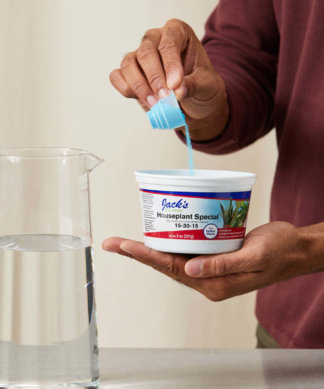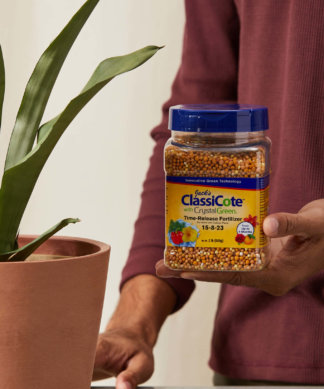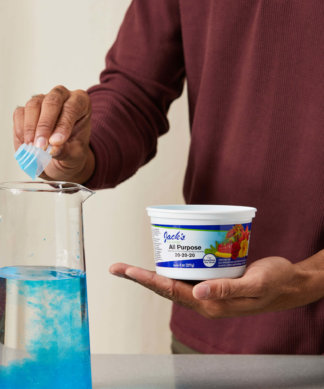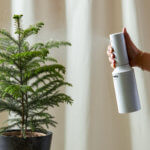Plant Care
Lend Your Struggling Houseplants A Helping Hand With Fertilizer
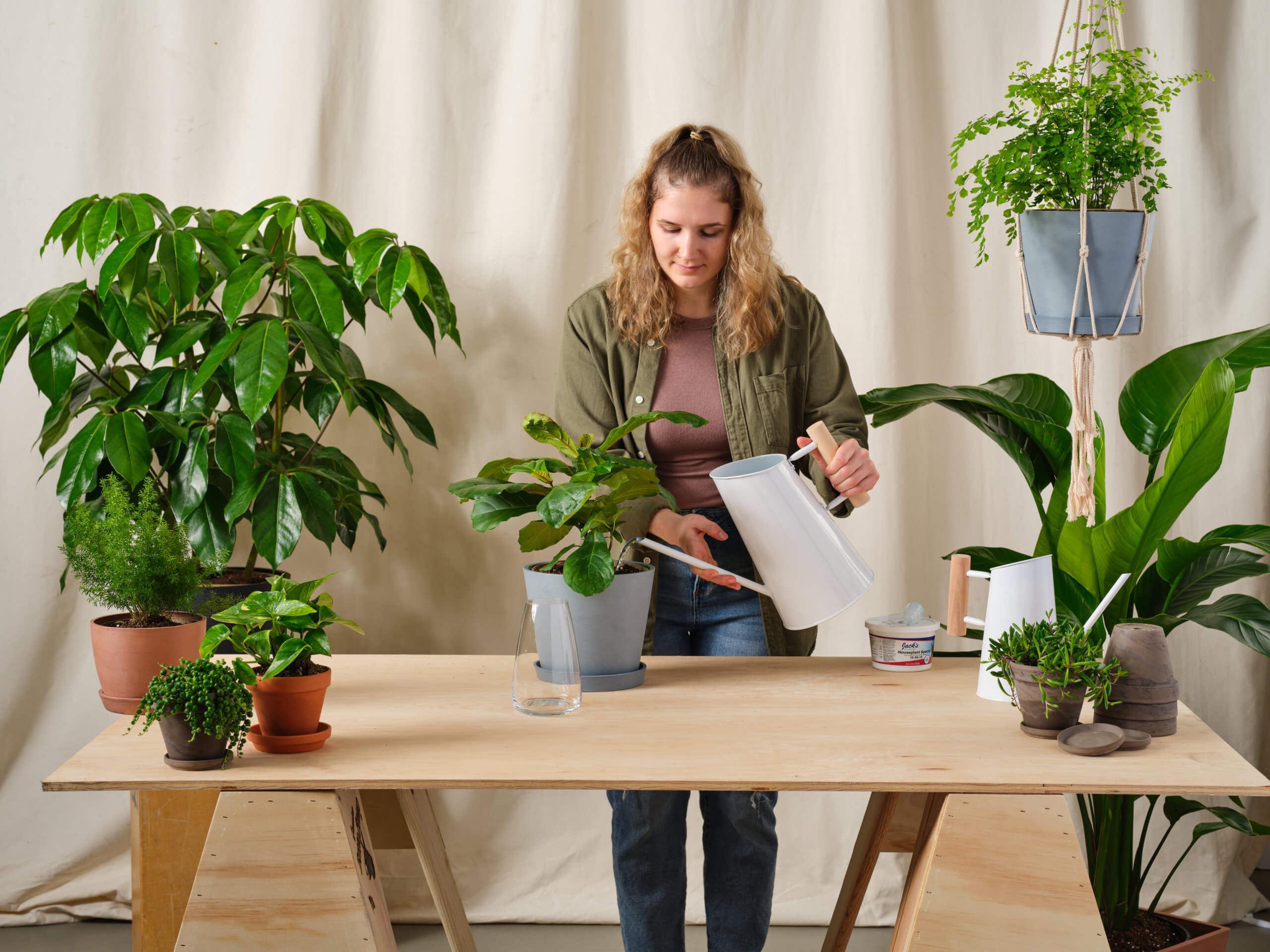
If you’re new to indoor gardening, you might be discouraged to find that as time goes on, your once-thriving plants seem to slow down or even start to decline. It can be frustrating when despite your best efforts at providing proper water levels and ideal temperature, humidity, and lighting conditions, your plants still seem to be looking on the sad side. If you’ve ruled out all the usual suspects, it may be time to apply fertilizer!
Houseplants are potted in sterile growing mixes that contain ingredients like peat moss, bark, perlite, and more. Often, slow-release fertilizer pellets are also mixed into the growing media. Over time, these ingredients release a low, steady level of nutrients to your plant, which absorbs them through its roots. Eventually, all of the nutrients become depleted from the growing mix, and this is when you might start to notice a decline in your plant’s appearance.
If you’ve had your plant for longer than a few months and have never fertilized it, it’s probably time to replenish the nutrients in the soil. Feeding houseplants regularly gives your plants a steady source of nutrients that power growth of roots, stems, leaves, and beautiful blooms. Not all fertilizers are the same, so let’s jump in to understand how to choose and apply fertilizer.
What Nutrients Do Fertilizers Provide?
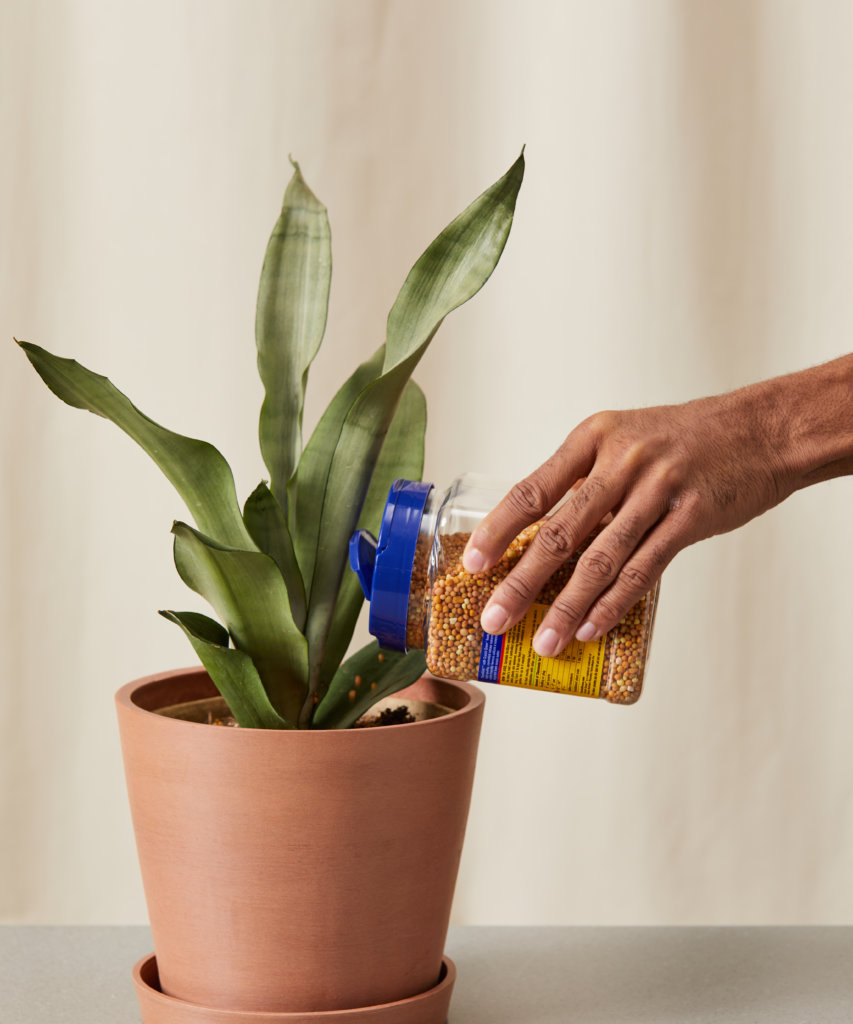
It’s easy to focus on their daily needs and think that all plants want is water and a good environment, but access to nutrients is a major factor for the health of your plant! Along with the carbon, hydrogen, and oxygen that all plants receive from air and water, houseplant fertilizers can top up these other important macronutrients essential for a healthy plant:
Nitrogen helps create proteins needed for growth, supporting the production of chlorophyll. Lush, leafy plants crave lots of nitrogen and may start to yellow if they’re not getting enough.
Phosphorus helps plants produce strong root systems along with flower buds, blooms, fruit, and seed. Houseplants grown for their bright blooms will benefit from fertilizer high in phosphorus.
Potassium helps plants balance root growth with top growth, and also supports the production of carbohydrates, which create a more resilient plant that’s better able to resist pest and disease.
Plants also make use of calcium, magnesium, sulfur, and many other micronutrients. These are all essential for plant growth, but are needed in much smaller amounts. Our Grow-How Team recommends choosing a fertilizer that lists micronutrients on the label, along with the standard macronutrients.
How To Choose The Right Plant Fertilizer
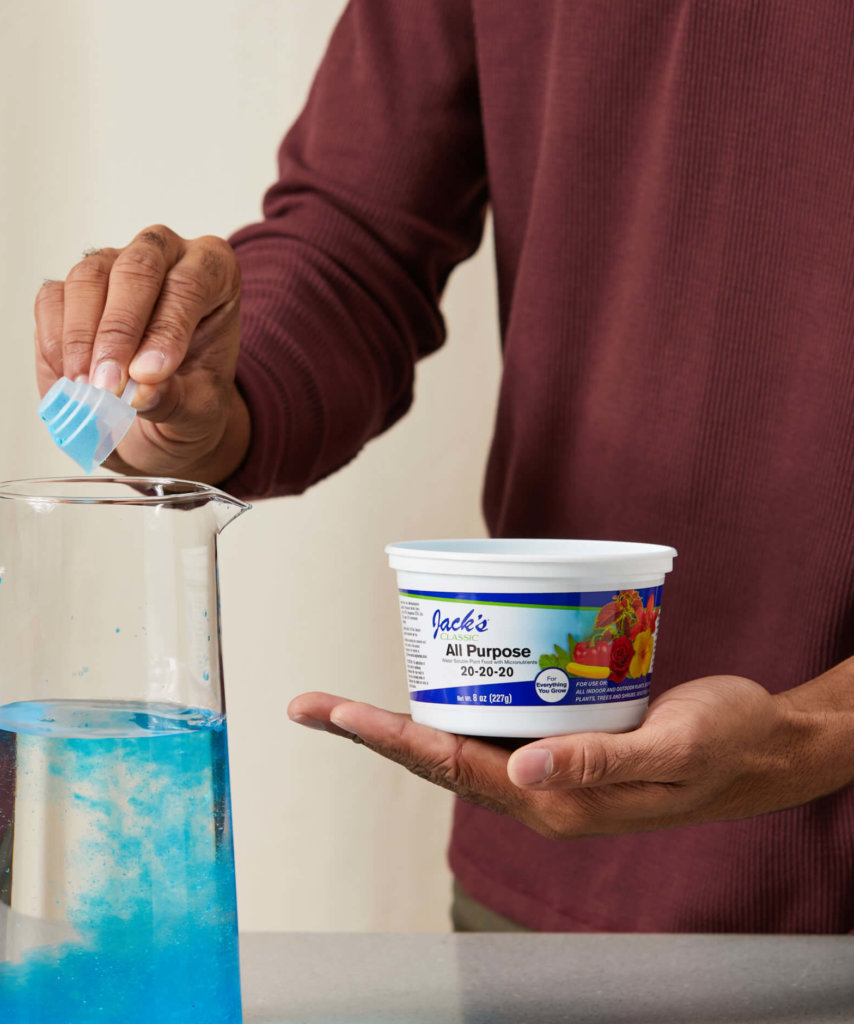
When it comes to feeding plants, you’ll find plenty of options on the market. It can be a bit overwhelming, but once you know the difference between types of fertilizer, choosing the right type is fairly straightforward.
What does the N-P-K number on fertilizer mean?
N, P, and K are the elemental symbols for the three macronutrients mentioned above: nitrogen (N), phosphorous (P), and potassium (K). These are listed as three numbers on the fertilizer label, representing the ratio at which each nutrient is present. For example, a fertilizer labeled 20-10-20 has 20% nitrogen, 10% phosphorus, and 20% potassium by weight.
What formulation is best?
Plant food is available in a few different formulations, with two of the most popular being water soluble and slow release.
Water soluble fertilizer is sold in a concentrated form, like a powder or liquid, and must be diluted in water before application. The benefit of water soluble fertilizer is that the nutrients are immediately available to plants. This type of fertilizer can promote fast growth, and you’ll need to fertilize regularly to ensure a steady supply of nutrients.
Slow release fertilizer is often sold in granular form, intended to be mixed into potting soil where it can release nutrients slowly over time. Each time the plant is watered, more nutrients are released in small amounts. Typically, slow release fertilizers last 3-4 months and can be mixed into the soil when repotting or sprinkled over the top surface. These are a great choice if you don’t remember to fertilize regularly.
What type of fertilizer does my plant need?
Many products are marketed as all-purpose fertilizers, meaning the N-P-K ratio is balanced, such as 5-5-5 or 20-20-20. These types of fertilizers deliver a balanced ratio of nutrients and are generally acceptable for all types of plants. For leafy houseplants that aren’t grown for flowers, these (or any that are slightly higher in nitrogen) are an ideal choice. If you want to only invest in one type of fertilizer, this is what we’d recommend!
If you’re fertilizing a flowering plant, you’ll want to use a fertilizer that is high in phosphorus to encourage blooming (for example, 15-30-15). A palm fertilizer will be high in potassium and low in phosphorus (for example, 16-5-25). You can also buy specialty fertilizers for orchids, cacti, and more!
The next important consideration is how often you need to fertilize your plants.
How Often To Fertilize Your Indoor Plants

It can be hard to know when your plants need fertilizer. There aren’t always clear signs like there are with underwatering or poor lighting. Instead, it helps to proactively set a fertilizer routine that is ideal for your particular plant. In our A-Z plant care guides, you can discover the best fertilizer frequency for different plant species.
In general, you’ll start fertilizing in early spring as your plant comes out of winter dormancy, continuing through summer and into early fall. When most plants slow their growth during the winter months, it’s best to pause your fertilizing routine.
Signs that you’re overfertilizing your plants
It’s possible to overfertilize your plants, which is why it’s important to always follow the label instructions. When too much fertilizer is used, the mineral salts build up in the soil faster than the plant can use them. The result can be a physical “burn” on the roots or a change in soil pH, which can cause root damage and make nutrients inaccessible to the plant.
Signs of overfertilizing include:
- Lower leaves wilt or turn yellow
- Leaf tips and edges turn brown
- Leaves drop abruptly
- Growth slows or stops
- Roots turn black or brown
- Crust builds up on the surface of the soil
If you recognize the signs of overfertilizing, we recommend leaching your plant’s soil as soon as possible. To do this, place your plant in a sink or tub and allow water to slowly run through the soil and out the drainage hole for a few minutes (longer for large pots). The water will flush out any mineral salt build-up that could be harming your plant. Allow excess water to drain before placing the plant back in its regular spot. Hold off on fertilizing for at least a month to give the plant time to recover.
How To Fertilize Your Plants
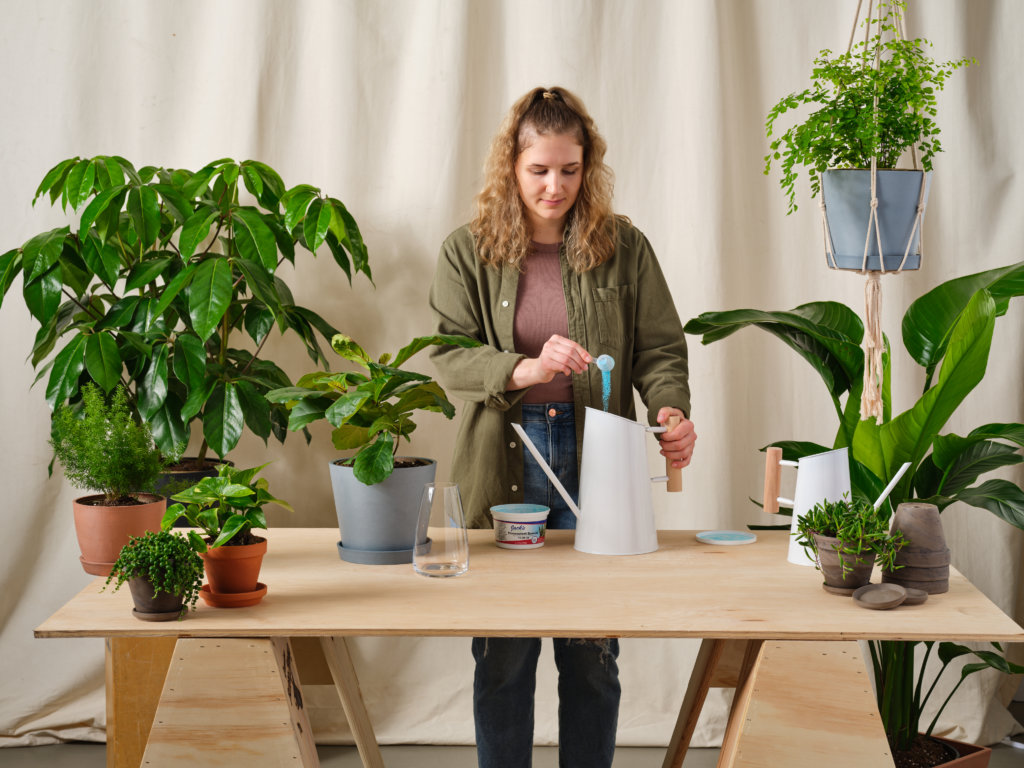
Applying fertilizer is relatively easy, but there are a few things to keep in mind. Here are some highlights from our Grow-How Team’s water soluble fertilizing tutorial:
- Trim away dead or dying leaves, and clear debris from the soil surface to ensure an even distribution of fertilizer.
- Never apply fertilizer to dry soil. We recommend watering a day or two before fertilizing.
- Follow the instructions on the label and don’t add more fertilizer than directed.
- Pour the fertilizing liquid evenly over the top of the soil until liquid begins to drip from the drainage hole. Avoid pouring fertilizer on the leaves of the plant.
With replenished nutrients, your plants will reward you with fresh new foliage in no time! If you have any lingering questions about the best way to feed your plants, reach out to our Grow-How Team for free, personalized plant care advice.






